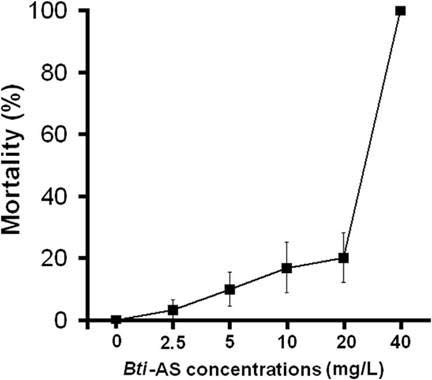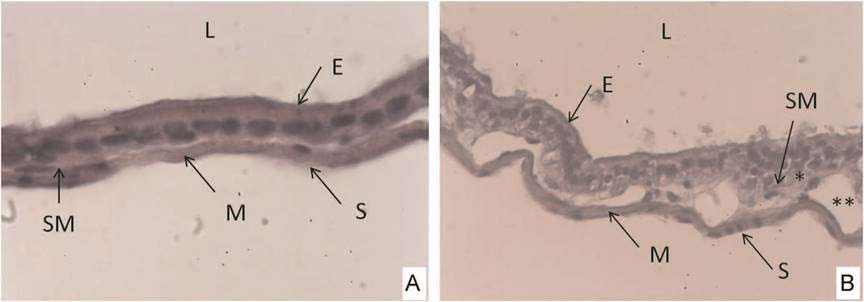The ecotoxicological risks of widespread Bt spraying for mosquito vector disease control exposed Dr Eva Sirinathsinghji
A new study finds that commercial formulations of a Bacillus thuringiensis (Bt) subtype, Bacillus thuringiensis subsp. israelensis (Bti) is toxic to tadpoles of an Argentinian species of frog at environmentally relevant concentrations. The Bti subtype targets mosquitoes and is commonly used for the control of infectious diseases.
Tadpoles of the common South American frog (Leptodactylus latrans) were exposed to a range of concentrations of Bti commercial formulation Introban® for 48 hours, which at sub-lethal concentrations induced genotoxic effects, intestinal histopathology and also abnormal activity of enzymes protective against oxidative stress. At the highest concentration tested, the formulation caused 100 % lethality, making it the first study to report lethality following Bti exposure in amphibians [1].
The researchers led by Dr Lajmanovic at the National Council for Scientific and Technical Research Argentina were motivated to carried out the study by the popular use of Bti products in suburban and urban areas, despite a lack of data indicating that the toxin are safe for health and the environment. Mosquitoes share their aquatic ecosystem with many other types of organisms including amphibian species. Bt products currently make up over 60 % of biopesticides (excluding genetically modified crops engineered to express Bt proteins) [2], their popularity based on high specificity to target organisms and a thus supposedly low toxicity to non-target organisms including humans. As such, Bti products are commonly used to control mosquito disease vectors, with for example the WHO recommending its use for control of Dengue fever.
Those in favour of Bt products claim their specificity is due to the alkaline conditions of insect guts that solubilise the crystal (Cry) toxins, as well as the subsequent specific binding of the toxins to receptors expressed in insect, which are absent in mammalian guts, creating pores in the gut walls and subsequent death. Amphibian tadpoles, like mosquito larvae, are primarily herbivorous and have a stomach poorly differentiated with a neutral pH while its intestine, as in the mosquito’s midgut, also lacks an acidic pH. These factors make them potentially more susceptible than other species to Bti products. Furthermore, numerous studies show toxicity of Bt products, including GM Bt crops to other non-target organisms including Daphnia magna water fleas (a common model aquatic organism used in ecotoxicology), rats as well as allergenic and respiratory problems in humans, though toxicity of the genetic process itself could also be a factor with regards to GM crops (see [3] Ban GMOS Now (ISIS special report) and [4] New GMO Studies Demonstrate ‘Substantial Non-Equivalence’, SiS 62). Bt toxins have also been detected in the blood of pregnant women and their foetuses, showing their capacity to survive the human digestive tract [5]. Aside from Bt toxicity itself, commercial formulations contain many added so-called ‘inert’ chemicals such as surfactants that have been shown to be toxic in their own right [6] and could explain to an unknown degree the results in this study.
Amphibians are important indicators of overall ecosystem health; therefore, testing for adverse effects of pesticides in amphibians is important for early detection of pesticide harm. The tests, as carried out in this study, include looking for acute lethality and recognised blood and enzyme biomarkers such as the activity of glutathione S-transferase (GST) and catalase (CAT), which are essential for preventing oxidative stress damage. Similarly, looking for DNA damage such as the presence of micronuclei in erythrocyte cells reveals genotoxic effects.
The researchers tested the effects of 2.5, 5, 10, 20 and 40 mg/L of Bti on the tadpoles, to look for levels of acute toxicity by estimating LC50, the concentration required to kill 50 % of the sample population. These doses are within the recommended concentrations for mosquito control of between 8-40 mg/L. The 48 hour LC50 value was 22.45 mg/L. There was a slow rise of mortality up to 20 mg/L and then a major spike to 40 mg/L (see Figure 1). The LC50 value is much lower than those obtained for other previous non-target organisms such as the fish Fundulus heteroclitus at 980 ml/L 9 [7].

Figure 1 Mortality rates of L. latrans tadpoles exposed to different Bti concentrations for 48 hours
The analysis of antioxidant enzymes GST and CAT showed that treatment significantly increase the activity of GST from 10 mg/L of Bti. CAT activity was more complicated with increase in activity at 20 mg/L but at lower concentrations activity was decreased. These results suggest that the Bti formulation may be inducing oxidative stress, which is consistent with similar results in studies on other organisms.
The frequency of micronuclei, aberrations of genetic material broken from the chromosome and sign of DNA damage, were analysed on the red blood cells of tadpoles after 48 hours exposure. Significant increases in micronuclei as well as other morphological alterations were found in treated tadpoles including nuclear buds, pycnotic nuclei, kidney-shaped nuclei, and lobed nuclei. Frequencies of micronuclei in erythrocyte cells were 0.82 for negative controls, with a significant increase to 2.74 % at 10 mg/L of Bti.
Histopathology of the intestines also showed that Bti induced infiltration of the connective tissue underlying the epithelium and dilation of the blood vessels. Both symptoms are associated with immune defence mechanisms of the organisms against a stressor (see Figure 2).

Figure 2 Light micrographs of the intestinal wall of the common South American frog tadpole stained with Hematoxylin-Eosin
(A) Control unexposed animals; (B) 48 hour exposed animals to Bti formulation Introban® (2.5 mg/L). L: lumen; E: layer of cuboidal epithelial cells; M: muscle layer; SM: submucosa; S: serosa. (*) Infiltrate in the connective tissue underlying the epithelium. (** )Dilation of blood vessels.
This work highlights the falsity of the claim that Bt is specific to target organisms and thus benign to non-target organisms. A recent study also questions the claim that Bti products do not persist in the environment, with their proliferation being detected on leaf litter in the French Alps that were closely related to commercial but not natural strains [8]. It is a biosafety concern not only for amphibians, but for people exposed to Bt products through their food supply in the form of biopesticide sprays as well as GM Bt crops.
Article first published 14/01/16
Comments are now closed for this article
There are 1 comments on this article.
Rory Short Comment left 16th January 2016 19:07:40
Paraphrasing an old axiom, in trying to solve a problem first look where the money is. The possibility of making money seems to drive reckless behaviour and such reckless behaviour is particularly damaging when it comes to matters of health both of humans and of the environment.